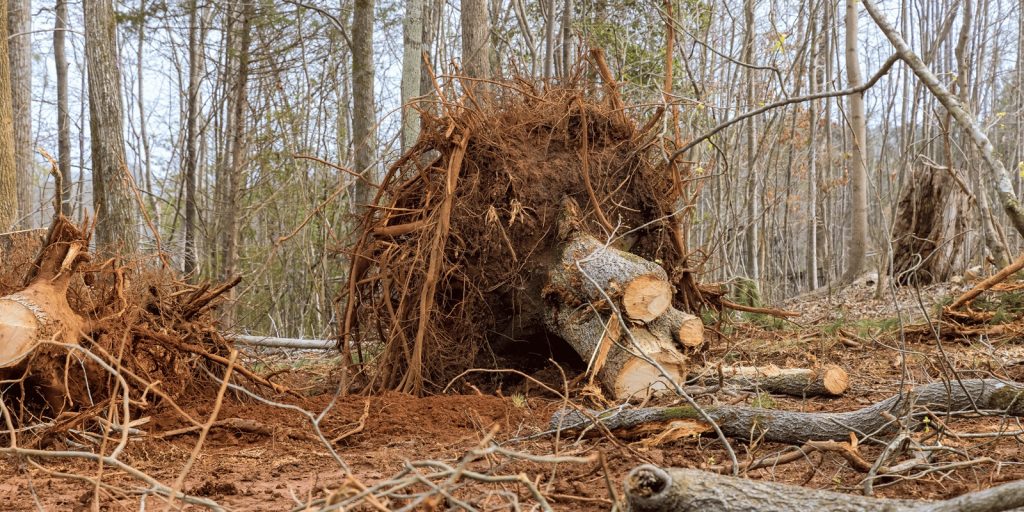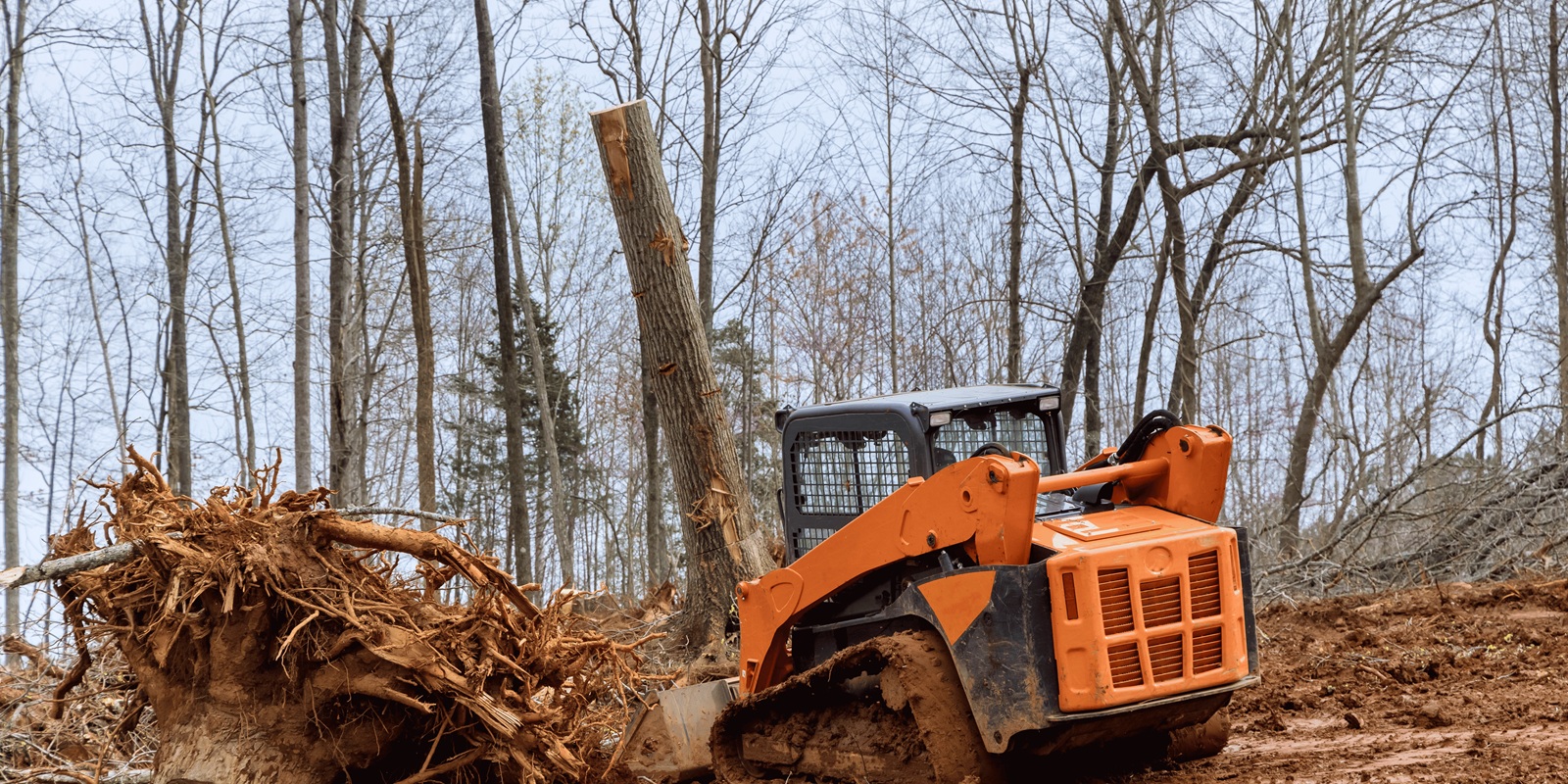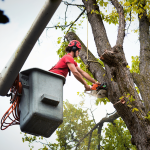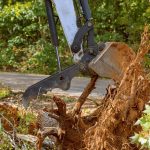Tree roots may become a big problem when not taken care of. Whether it is a cracking driveway, a tree root that is pushing its way through your foundation, or even that you want your yard space back, it is important to be safer and more effective at removing large-rooted trees. This guide will take you through the process of digging up trees that are large in size.
Why You Might Need to Remove Tree Roots
It is necessary to know why large roots need to be removed before discussing the removal process.
- Destruction of Property: Damage to underground pipes, sidewalks, or cracks in driveways.
- Inhibiting Landscaping Plans: Planning to place a patio, shed, and/or garden bed? Roots can get in the way.
- Dead or Fallen Trees: Once a tree has been cut, the remaining roots might still grow or even rot beneath the ground, resulting in sinkholes or fungi.
Safety First: Important Considerations
Cutting the root of big trees is a tedious task that may become hazardous when not done well.
Consider the following:
Call Before You Dig: Dial 811 to identify and mark the utilities that are underground. This is a legal provision in most states in the U.S.
Put on Protective Wear: Use gloves, safety goggles, steel-toe boots, and long pants.
Check Local Regulations: Some cities or HOAs might have a regulation on removal of trees, particularly some species.
Tools and Equipment You’ll Need
What you may need depending on the size of the root and the mode you choose:
- Shovel or trenching spade
- Pickaxe or mattock
- Reciprocating saw or hand saw
- Chainsaw (large stumps/roots)
- Root-cutting shovel or root saw
- Heavy-duty loppers
- Hose or pressure washer (to expose roots)
- Stump grinder (removal of deep roots)
- Root killer (chemical)
Step-by-Step: How to Remove Big Tree Roots from the Ground
Step 1: Identify the Root System
The first thing to do is to determine the depth and width of the root system.
Roots Are Usually 2 to 3 Times the Width of the Tree Canopy:
- Look for surface roots
- Test the soil to ascertain depth
- Determine the number of roots that are alive and those that have died
Step 2: Expose the Roots
Dig around the root to be removed using a shovel or trenching spade. Take as much soil out of the surrounding area and underneath as possible so that the root is fully exposed.
Pro Tip: Cleaning soil is quicker and easier with the help of a garden hose or a pressure washer.
Step 3: Cut the Root
Any cutting tool is suitable depending on the size of root:
- Below 2 inches: Loppers or a hand saw
- Approximately 2 to 6 inches: Reciprocating saw or root saw
- Beyond 6 inches chainsaw might be required (be very careful)
Critical: Clean cuts should be made so as not to split the root and destroy the surrounding parts.
Step 4: Remove the Root from the Ground
Once the root has been cut, loosen it more with a pickaxe or mattock. Dig it up out of the soil, and do the same with any further roots that are attached.

When the root is very stubborn:
- Cut it into smaller pieces
- Use a digging bar to pry it out
- Wet the area with water to loosen the soil
Step 5: Fill the Hole
When the root has been completely taken out, fill the hole with topsoil or fill dirt, and tamp it very firmly. This stops sinking and provides a stable ground for grass or new landscaping.
Alternative Methods for Stubborn Roots
Use a Stump Grinder
If you have just cut a tree recently, a stump grinder can be used to cut the stump and root attached to it. Most home improvement stores (such as Home Depot or Lowe) rent these machines.
- Grund stump until it is under the ground
- Do the same with surface roots
- Plant soil and mulch into the hole
Chemical Root Removal
A chemical root killer with glyphosate or triclopyr should be used with large root systems or where accessibility is a problem.
- Pierce holes on the root or the stump
- Pour the chemical inside
- Allow 4 to 6 weeks for the roots to die
- Excavate them as they soften and rotten
Caution: Be careful with the chemicals and obey all the instructions on the labels; do not allow children and pets near the chemicals.
What Not to Do
The following are some of the most frequent errors made in the removal of big tree roots:
- Burning the Roots – It is both unsafe and illegal as well as ineffective
- Using a Lot of Salt or Vinegar – This may poison the soil around
- Extracting Large Roots Around Houses – Extraction of roots that hold the earth around your house may lead to subsistence or foundation crack
When to Call a Professional
Some tree root removal must be done by a professional and not DIY. Use a pro when there are:
- Roots within distance of the house, foundation, or plumbing
- Very large roots (greater than 10 inches in diameter)
- Risk of tree instability
- Heavy machinery or stump grinders required
By contracting an experienced arborist or landscape person, you are guaranteed safety for you and your property.
Preventing Future Root Problems
After you have pulled off the root, avoid future problems:
- Plant a Smart Tree: Do not use invasive tree species, such as Silver Maple, Willow, or Poplar around your house.
- Place Root Barriers: This is particularly helpful along driveways or foundations as well as along sidewalks.
- Space Adequately: Spacing of trees between buildings should be a minimum of 20 to 50 feet, depending on the kind of tree.
- Periodical Maintenance: Annual pruning of trees is a good idea to control their root growth.



